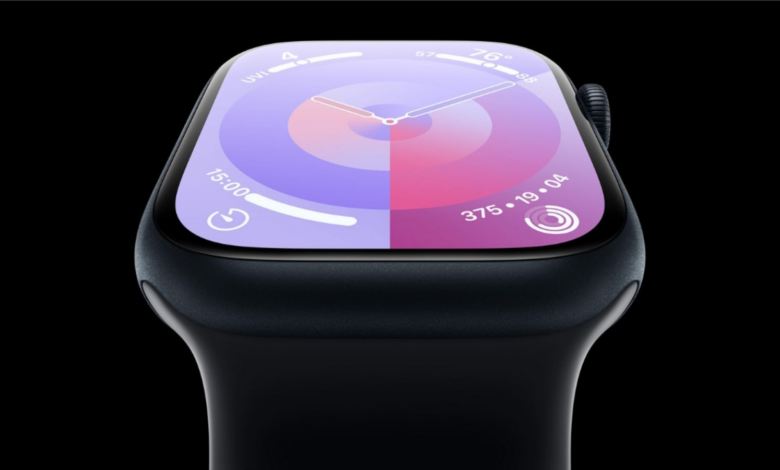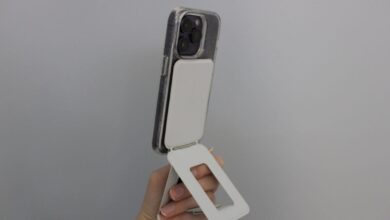How can the Apple Watch help during pregnancy? Dr. Lauren Cheung explains how real-time health data helps

The Apple Watch is slowly evolving from a trendy gadget to a vital health tracker. The device has made headlines for its heart health monitoring features and many users credit the Apple Watch with saving their lives, but now the Apple Watch can also track pregnancy. Tracking women’s health is a big part of Apple’s business, and with new features, the Apple Watch can detect pregnancy even before a user opts for a clinical test.
Apple Watch Pregnancy Features
So, what can Apple Watch What does it do? The new WatchOS 11, iOS 18, and iPadOS 18 provide additional support for pregnant users to reflect on the changes in their physical and mental health during this important time. When users log their pregnancy in the Health app on their iPhone or iPad, the Cycle Tracking app on Apple Watch will display their gestational age and allow them to log symptoms for things that are common during pregnancy. They’ll also be prompted to review things like their elevated heart rate notification threshold, since heart rates tend to increase during pregnancy.
In the Health app on iPhone or iPad, pregnant users can also choose to be reminded to take monthly mental health assessments, as people may be at higher risk for conditions like depression during and after pregnancy. Walking stability, measured by the iPhone, could also alert users more quickly to potential fall risks during the third trimester of pregnancy, as the risk typically increases during that period.
Dr. Lauren Cheungan internist on the clinical team at Apple, in an interaction with HT Technology explains how the tiny Apple Watch on your wrist can change the lives of first-time moms.
Dr. Lauren Cheung works closely with other teams at Apple to build Health products and features while continuing to serve as a faculty member at Stanford Medicine. Lauren is a co-founder of the Stanford Center for Digital Health and has played a major role in the implementation and rollout of telemedicine and digital health across Stanford. Here are excerpts from the interview…
Q: Can you share a little bit about how the clinical team at Apple collaborates with the software, hardware, and other core product teams to develop new features?
ONE: I am one of many physicians on the Clinical Team at Apple working alongside engineers, designers, scientists, and many others to create new health and wellness products and features.
We work closely with those teams with the common goal of empowering people with information so they have the tools to monitor their health, understand their health, and take steps to improve their health. And everything we do in health is built with actionable, science-based insights and built with privacy at its core.
Q: Can you simplify and explain the differences a first-time pregnant woman might experience when using the new features of the Apple Watch versus not using the Apple Watch?
ONE: Pregnancy can be a pivotal time in a person’s life. And during pregnancy, there are many changes your body goes through that you can keep track of. But with all these changes, it can also be difficult to know what’s normal and what to watch out for, which is where our new features will help pregnant women better understand.
With iPhone and iPad TabletYou’ll be able to see when you’re pregnant on a chart and log common pregnancy symptoms, like fatigue or lower back pain. At Apple, we believe that health is both body and mind, so pregnant users can also choose to be reminded to take a monthly mental health assessment, since people can be at increased risk for conditions like depression during and after pregnancy.
And with iPhone, you’ll get fall risk notifications faster in your third trimester.
With Apple Watch, you’ll have access to all the important health metrics measured by its powerful sensors like heart rate, respiration rate, sleep, etc., and see your pregnancy across all the charts in Health, so you have that important context when reviewing your health data. This can be very useful for something like resting heart rate, for example. Apple The Women’s Health Study found that the average heart rate before pregnancy was 65.5 BPM. This heart rate increased during pregnancy and peaked in the third trimester at 77 BPM. It then decreased after giving birth.
So if you see changes like this in your resting heart rate or changes on other graphs, you’ll have this extra context.
Q: There is an argument from time to time that smartwatches like the Apple Watch tend to make users anxious and constantly concerned about their health with daily alerts and monitoring. What is your view on this?
ONE: We design all our products and features to be there when you need them and hidden when you don’t.
So we have high standards when it comes to notifying people about changes to their health data. We make sure the notifications are accurate, meaningful, and helpful. Let me explain.
In addition to extensive validation before releasing a feature, notifications must hit a certain threshold before they even reach users. Like our irregular heart rate notification, it will only appear if five out of six sequential heart rate graph readings show an irregular heart rate. And if you’ve logged a pregnancy and your high heart rate notification threshold is below 120, we’ll notify you to increase it, since research shows that heart rates increase during pregnancy. On Cycle Deviations, you’ll only get a cycle deviation if a pattern is detected more than once within a given time frame.
We have teams of doctors, designers, engineers working together to ensure we provide users with meaningful insights in a way that is easy to understand and actionable when needed.
We also think carefully and thoughtfully about how we present information to users, especially around health, and a big part of our development process includes user experience testing. From wording to color to source, these are all things we think about.
Q: With health and fitness gadgets growing rapidly every year, one problem many of us face is that doctors generally do not take the data from personal gadgets seriously. What do you think can be done to make the data from smartwatches trustworthy and usable by doctors?
ONE: Everything we do at Apple is based on science, so both users and clinicians in the medical community can trust the insights we share. When we develop a new feature, we pay close attention to the details. We look at mountains of data and peer-reviewed publications, and conduct months and years of testing and experimentation. We don’t just give you a number—we tell you what the numbers mean, and in the simplest way possible. And we tell you when to see a doctor to get the full picture.
We also regularly publish thematic reports to be transparent about how we come up with these insights — we’ve done this on features like Electrocardiogram app, irregular heart rate notifications, blood oxygen levels, sleep stages and more.




